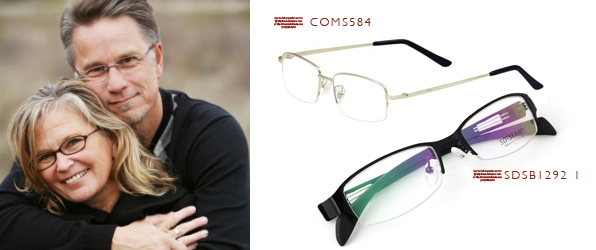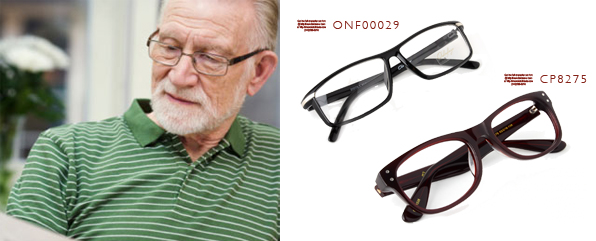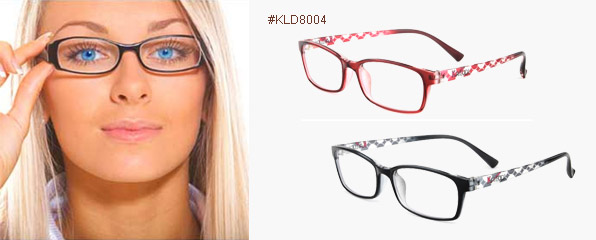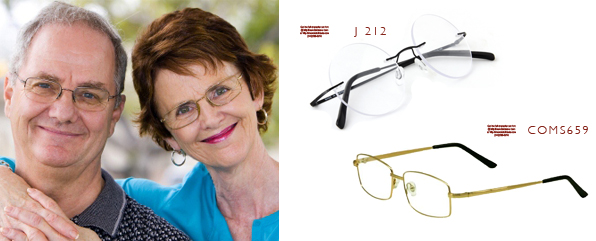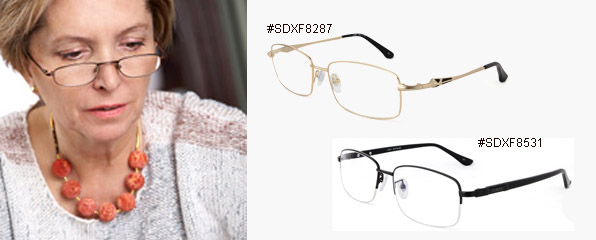
Bifocal glasses literally means two focuses. It is meant to describe eyeglasses lenses that enable the user to see clearly at two different distance ranges through one lens. Benjamin Franklin is credited with inventing the first bifocal lens by gluing two lens halves from two different lens prescriptions together. Bifocal glasses are used for many reasons, the main reason being for Presbyopia.
Presbyopia is a vision condition in which the crystalline lens within the eye looses its flexibility. At about 40 years of age, we perceive this as increasing difficulty with clearing objects the closer we bring them toward our eyes, especially in low lighting levels. Bifocals have an additional power on the bottom part of the lens to aid in close up focus, enabling clarity at both distance and near with one pair of glasses.
When you first put on your new bifocals, you will be aware of some unusual sensations: the presence of a dividing line, the blur in the lower part of the glasses as you walk, the “jumping” image as you look from one part of the lens to the other, and the feeling that the floor does not seem to be where it belongs-it looks too close or too far away. But your brain is remarkably adaptive, so you will get used to these sensations and eventually ignore them. Try to accept the idea of wearing bifocals. Concentrate on how well you can now see up close! Here are a few suggestions that will make your adjustment to bifocals easier.
If you have never worn prescription eyeglasses before, you may adjust in small doses by wearing the bifocals only when you need to for close work. You will gradually find yourself able to wear them more and more. But this method only prolongs the time for full adaptation. The quickest adjustment will come by wearing them all the time. Moreover, if you need to wear a distance correction most or all of the time, don’t keep switching back and forth between the bifocals and your old glasses. That only prolongs the adjustment period. Put the bifocals on and leave them on. Try to stop thinking about the bifocals. If the floor looks blurred, don’t keep looking at it. You never used to walk around looking at the floor before you got the bifocals! Ignore the peculiar sensations, “funny” vision, and reflections in the glass. The less attention you pay to them, the sooner you will stop noticing them. If the frame bothers you, have it adjusted by your optical dispenser. Keep in mind that the bifocal reading segment provides sharp vision at a specific distance range from your eyes. An object closer or farther away will be blurred, so you may have to move closer or farther from that object to see it clearly. (If the add is not in the right position for comfortable reading, you may have to tilt your head back too far to see up close, or else have the height of the glasses adjusted or the lenses changed.) Having a difficult or slow time adjusting to bifocals does not mean that a mistake was made. Of course, errors can happen, but 99% of the time it’s simply a matter of adapting to the new glasses. If you have been diligent in trying them for a few weeks and you still think the lenses are not right, have the dispensing optician check them. Then, if problems are not resolved, make an appointment for us to check the measurement of your eyes and the glasses, to determine whether there has been an error in your prescription.










